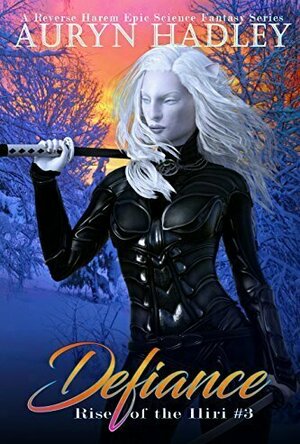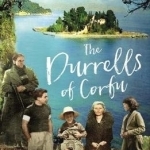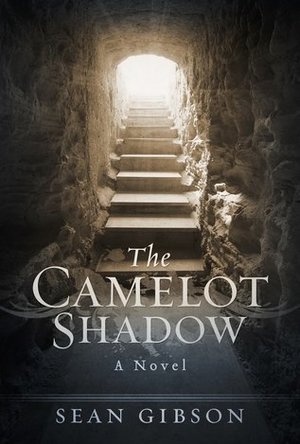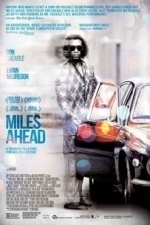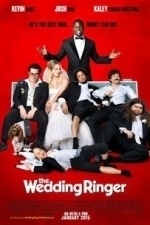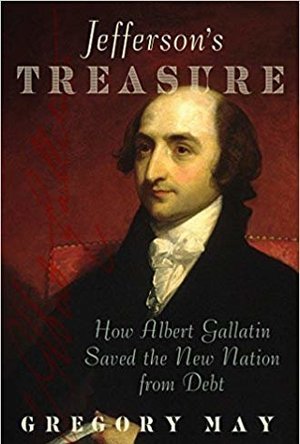Search
Search results
Lyndsey Gollogly (2893 KP) rated Defiance (Rise of the Iliri #3) in Books
Mar 3, 2020
Contains spoilers, click to show
HER ONLY CHOICE IS TO CHANGE HER WORLD…
Salryc Luxx has come a long way in just four years, from slave to conscript, to elite Black Blade assassin, rising rapidly as her extraordinary abilities are revealed. Promoted to lieutenant after capturing a valuable shipment of metals and laying waste to the invading force, she and Cyno, her partner (in war and love), have been entrusted with a dangerous mission: to assassinate the King of Anglia and the five nobles in line for the throne, leaving the path to ascension clear for their own leader.
That’s one side of the story. The other is that she and Cyno have been assigned this suicide mission as Parliament’s first pass at removing the iliri taint from the military. Either way, without the strength of allies, the Conglomerate of Free Citizens cannot turn back the invaders, whose goal is to wipe out the whole iliri species, so Sal and Cyno are the only hope of ending the continental war devastating their species. Traveling for months, they are so far away from their home base that they’re beyond the mental link that connects the pack. They remain committed to their mission—and to each other, but… unhappily disturbed. They can only hope their separation from the pack bring them closer together. But the danger is, in the absence of the pack, their bond will wither.
A kind deed, helping what they take to be a wounded animal, leads to the discovery of their true nature, to strengthening and re-energizing their pack, and to a surprising alliance that offers hope for the future. The wounded animal, they learn, is a graour wolf, a species of ferocious warriors with language and traits nearly identical to iliri. When two of them ask to join her pack, Sal recruits them as Black Blades and the iliri are no longer the only dog in the fight for iliri freedom.
But Anglia is nothing like the Conglomerate of Free Citizens. Anglians discriminate based on gender, not species. Iliri are thought to be just a myth--until Sal shows her face. To convince the king and his council that yes, a woman really can be a soldier, she's going to have to make her own rules. The enemy is moving. She doesn't have time to deal with outdated court manners.
As the defiance of an entire species rises up in her, she really has no choice—she’ll just have to change the world.
Women readers will thrill to the reverse harem idea that pushes the boundaries of epic fantasy in this second world series that may remind some of Avatar without the scary beasts; or even Game Of Thrones, but happier, with more color—and a dazzling female protagonist. Fans of Anne McCaffrey’s Dragonriders of Pern will find Sal’s planet Ogun a thrilling destination for their next fantasy fix
They just keep getting better! Sal and Cyno are out on their own and they are kicking up a storm! We get to meet the Graour who the Iliri are descended from! We get a chance to see a whole new world building. I love the new characters and you are with them every step of the way on the battlefield it's also such a good feeling when the black blades are all back together and loving their new pack mates. It was only a matter of time before Cyno became her number 1 I'm glad Blaec took it well. Looking forward to book 4!
Salryc Luxx has come a long way in just four years, from slave to conscript, to elite Black Blade assassin, rising rapidly as her extraordinary abilities are revealed. Promoted to lieutenant after capturing a valuable shipment of metals and laying waste to the invading force, she and Cyno, her partner (in war and love), have been entrusted with a dangerous mission: to assassinate the King of Anglia and the five nobles in line for the throne, leaving the path to ascension clear for their own leader.
That’s one side of the story. The other is that she and Cyno have been assigned this suicide mission as Parliament’s first pass at removing the iliri taint from the military. Either way, without the strength of allies, the Conglomerate of Free Citizens cannot turn back the invaders, whose goal is to wipe out the whole iliri species, so Sal and Cyno are the only hope of ending the continental war devastating their species. Traveling for months, they are so far away from their home base that they’re beyond the mental link that connects the pack. They remain committed to their mission—and to each other, but… unhappily disturbed. They can only hope their separation from the pack bring them closer together. But the danger is, in the absence of the pack, their bond will wither.
A kind deed, helping what they take to be a wounded animal, leads to the discovery of their true nature, to strengthening and re-energizing their pack, and to a surprising alliance that offers hope for the future. The wounded animal, they learn, is a graour wolf, a species of ferocious warriors with language and traits nearly identical to iliri. When two of them ask to join her pack, Sal recruits them as Black Blades and the iliri are no longer the only dog in the fight for iliri freedom.
But Anglia is nothing like the Conglomerate of Free Citizens. Anglians discriminate based on gender, not species. Iliri are thought to be just a myth--until Sal shows her face. To convince the king and his council that yes, a woman really can be a soldier, she's going to have to make her own rules. The enemy is moving. She doesn't have time to deal with outdated court manners.
As the defiance of an entire species rises up in her, she really has no choice—she’ll just have to change the world.
Women readers will thrill to the reverse harem idea that pushes the boundaries of epic fantasy in this second world series that may remind some of Avatar without the scary beasts; or even Game Of Thrones, but happier, with more color—and a dazzling female protagonist. Fans of Anne McCaffrey’s Dragonriders of Pern will find Sal’s planet Ogun a thrilling destination for their next fantasy fix
They just keep getting better! Sal and Cyno are out on their own and they are kicking up a storm! We get to meet the Graour who the Iliri are descended from! We get a chance to see a whole new world building. I love the new characters and you are with them every step of the way on the battlefield it's also such a good feeling when the black blades are all back together and loving their new pack mates. It was only a matter of time before Cyno became her number 1 I'm glad Blaec took it well. Looking forward to book 4!

Best Weight Loss Hypnosis Therapy by Seth Deborah Roth, Lose Fat, Think Thin & Better Health, through Hypnotherapy and Meditation.
Medical and Lifestyle
App
One app, 15 Weight Loss Sessions! Featured on the Discovery Channel, Created By A Fellow with the...

Allen Carr’s Easy Way to Stop Smoking
Health & Fitness and Lifestyle
App
For the first time an interactive presentation of Allen Carr’s Easyway method is available on the...

House Cleaning HighSchool Girl
Games and Entertainment
App
Highschool is the golden time of life where everything seems so shiny and new. It is the time of...
Mayhawke (97 KP) rated The Durrells of Corfu in Books
Feb 13, 2018
Truth Without Disenchantment
I think the first thing to note is that there is probably no point in reading this book if you haven't at the very least watched one of the T.V. series. Indeed a lot of it will probably go right over your head if you are not well-versed in Durrell's tales of his childhood in Corfu.
I am, and have been since I first picked My Family And Other Animals when I was eleven - which is longer ago now than I would really like to think about! Age aside, my point is this: I have read and loved these books many times, and for several decades. Durrell was my first 'grown up' read as a child and the Corfu trilogy has long been ranked in my 'comfort reads' - those books you turn to again and again when you just want something familiar and easy. It was with some concern, then, that I picked up the ARC of Haag's book when it landed in our staff room. I didn't want my illusions destroyed, and whilst it goes largely without saying that there was going to be some massaging of the truth in Durrell's autobiographical stories I wasn't sure that I was ready for The Truth, The Whole Truth, and Nothing But.
Haag, it turns out, is also a little bit in love with the Durrells. As such I can think of few better people to write the bald truth about this family without destroying the charm and good humour of Gerald Durrell's books for those of us who want to hold on to the myth. This delicate unravelling begins on the very first page as Haag presents the reader with the brutal and tragic truth behind the Corfu sojourn - the sudden death of Durrell Snr at the age of just forty-four. In My Family Gerald Durrell manages to skim over this uncomfortable truth with such success that he imparts the information that his mother is a widow without ever giving the reader space to think or question more deeply into the effect on the family beyond their enforced to move back to cold, rainy England - a place from which they then escaped to Corfu, so legend has it, for no more pressing reason than to avoid colds.
And so Haag's biography continues, with a gentle but unrelenting quality, to pull scales from eyes. Using tracts from Durrell's books he often does little more than a simple but effective compare and contrast with reality: introducing characters who were completely written out of the Durrell legend, yet were significant members of the Durrell collective; opening up the more Bohemian aspects of their life, and the way they were perceived by other immigrant British at the time.
Haag also exposes the more complex relationships within the family. Lawrence, who is presented through young Gerry's eyes as probably his greatest critic it transpires is his greatest champion: directing and ensuring Gerry's education whilst keeping him free of the structure and strictures of school; the somewhat sadder story of belligerent and boisterous Leslie - so much larger-than-life in the Corfu books, who later seems to become estranged from the family; and perhaps most surprising of all - Margo, who had a life that rivals either of her famous brothers for interest and adventure, at least in her younger years.
All of these uncomfortable exposes Haag achieves, and I feel far better informed about the family now, than I ever have yet never once have I felt that I will not be able to return and pick up Gerry Durrell's books and read them with the same joy and pleasure that I have done for the last four decades.
I am, and have been since I first picked My Family And Other Animals when I was eleven - which is longer ago now than I would really like to think about! Age aside, my point is this: I have read and loved these books many times, and for several decades. Durrell was my first 'grown up' read as a child and the Corfu trilogy has long been ranked in my 'comfort reads' - those books you turn to again and again when you just want something familiar and easy. It was with some concern, then, that I picked up the ARC of Haag's book when it landed in our staff room. I didn't want my illusions destroyed, and whilst it goes largely without saying that there was going to be some massaging of the truth in Durrell's autobiographical stories I wasn't sure that I was ready for The Truth, The Whole Truth, and Nothing But.
Haag, it turns out, is also a little bit in love with the Durrells. As such I can think of few better people to write the bald truth about this family without destroying the charm and good humour of Gerald Durrell's books for those of us who want to hold on to the myth. This delicate unravelling begins on the very first page as Haag presents the reader with the brutal and tragic truth behind the Corfu sojourn - the sudden death of Durrell Snr at the age of just forty-four. In My Family Gerald Durrell manages to skim over this uncomfortable truth with such success that he imparts the information that his mother is a widow without ever giving the reader space to think or question more deeply into the effect on the family beyond their enforced to move back to cold, rainy England - a place from which they then escaped to Corfu, so legend has it, for no more pressing reason than to avoid colds.
And so Haag's biography continues, with a gentle but unrelenting quality, to pull scales from eyes. Using tracts from Durrell's books he often does little more than a simple but effective compare and contrast with reality: introducing characters who were completely written out of the Durrell legend, yet were significant members of the Durrell collective; opening up the more Bohemian aspects of their life, and the way they were perceived by other immigrant British at the time.
Haag also exposes the more complex relationships within the family. Lawrence, who is presented through young Gerry's eyes as probably his greatest critic it transpires is his greatest champion: directing and ensuring Gerry's education whilst keeping him free of the structure and strictures of school; the somewhat sadder story of belligerent and boisterous Leslie - so much larger-than-life in the Corfu books, who later seems to become estranged from the family; and perhaps most surprising of all - Margo, who had a life that rivals either of her famous brothers for interest and adventure, at least in her younger years.
All of these uncomfortable exposes Haag achieves, and I feel far better informed about the family now, than I ever have yet never once have I felt that I will not be able to return and pick up Gerry Durrell's books and read them with the same joy and pleasure that I have done for the last four decades.
Ivana A. | Diary of Difference (1171 KP) rated The Camelot Shadow in Books
Jun 3, 2018
‘’I can either tell you my tale, or I can respond to your feeble witticisms. I cannot, in my mildly inebriated state, do both.’’
This is not your usual story related to King Arthur, Merlin and Camelot. This will, in fact, be quite different story and not only unusual, but one of a kind.
We go back in time when Queen Victoria was ruling over England. In a time when the author really liked to point out the fact that the characters are using trains. It was pointed out so much, that I had to do a bit of research to see if trains existed in that time. They did – apparently England had the oldest rail transport in the world. And Queen Victoria was one of the first royals to use that form of transport too.
Now, I am not even sure why I kept going on about trains… Back to the story…
The Camelot Shadow covers the story of Lord Alfred Fitzwilliam, a man whose wife is ill from an incurable illness. When an opportunity arises, giving him the chance and hope that he might save the life of his lover, he goes on a mission to find an object from the time when King Arthur was the ruler of England, and Merlin was his companion.
With a help from a group of people, Alfred digs the history and the stories of the past, only to discover that not everything he believed in was true, and not everyone that he trusted is his ally.
A story that reminded me of Dan Brown’s work. Quite similar in the sense of clues, history, what is a myth and what is a fact, though also quite distinctive, as it covers people’s characters so well, describing their personalities in a powerful way.
‘’Wealth. Status. Happiness. A perfect life. All built on an ephemeral foundation, an impossibility masking a lie that, if exposed, if openly acknowledged, would bring it all crashing down around our heads.’’
When a great disappointment comes around, and all hope is gone, people change, and people feel things. A person starts to wonder what they did wrong, what could they have done differently, what if… Alfred is one of the people where we will see his change over the chapters. For better or for worse, I’ll let you decide.
‘’It was Guinevere’s infidelity that brought down Arthur’s Camelot’’ – he said, wiping a trickle of Scotch from his chin with the back of his sleeve. ‘’It was God’s cruelty that brought down mine.’’
A book that explains good and evil in the unusual way. I thought I could explain good and evil, but sometimes my evil can do you good, and your good can do harm to everyone. And power… oh what people are capable to do for power…
‘’Power, Arthur had taught him, was not something to covet, but rather something to treat in the same manner one might handle a wild mastiff – with considerable respect, constant vigilance, and a trace of fear. ‘’
If you are a fan of history fiction, and stories about Arthur and Merlin, you would definitely want to dive in into this book and get lost into the world. And that is not the only thing that this book covers… It covers hope, faith, loss, love, good, evil, power, guilt and everything in between. Get ready for an adventure. One full of bravery and magic. And maybe… maybe some hope.
A huge thank you to the author, Sean Gibson, who was kind enough to give me an e-copy of this book in exchange for an honest review.
This is not your usual story related to King Arthur, Merlin and Camelot. This will, in fact, be quite different story and not only unusual, but one of a kind.
We go back in time when Queen Victoria was ruling over England. In a time when the author really liked to point out the fact that the characters are using trains. It was pointed out so much, that I had to do a bit of research to see if trains existed in that time. They did – apparently England had the oldest rail transport in the world. And Queen Victoria was one of the first royals to use that form of transport too.
Now, I am not even sure why I kept going on about trains… Back to the story…
The Camelot Shadow covers the story of Lord Alfred Fitzwilliam, a man whose wife is ill from an incurable illness. When an opportunity arises, giving him the chance and hope that he might save the life of his lover, he goes on a mission to find an object from the time when King Arthur was the ruler of England, and Merlin was his companion.
With a help from a group of people, Alfred digs the history and the stories of the past, only to discover that not everything he believed in was true, and not everyone that he trusted is his ally.
A story that reminded me of Dan Brown’s work. Quite similar in the sense of clues, history, what is a myth and what is a fact, though also quite distinctive, as it covers people’s characters so well, describing their personalities in a powerful way.
‘’Wealth. Status. Happiness. A perfect life. All built on an ephemeral foundation, an impossibility masking a lie that, if exposed, if openly acknowledged, would bring it all crashing down around our heads.’’
When a great disappointment comes around, and all hope is gone, people change, and people feel things. A person starts to wonder what they did wrong, what could they have done differently, what if… Alfred is one of the people where we will see his change over the chapters. For better or for worse, I’ll let you decide.
‘’It was Guinevere’s infidelity that brought down Arthur’s Camelot’’ – he said, wiping a trickle of Scotch from his chin with the back of his sleeve. ‘’It was God’s cruelty that brought down mine.’’
A book that explains good and evil in the unusual way. I thought I could explain good and evil, but sometimes my evil can do you good, and your good can do harm to everyone. And power… oh what people are capable to do for power…
‘’Power, Arthur had taught him, was not something to covet, but rather something to treat in the same manner one might handle a wild mastiff – with considerable respect, constant vigilance, and a trace of fear. ‘’
If you are a fan of history fiction, and stories about Arthur and Merlin, you would definitely want to dive in into this book and get lost into the world. And that is not the only thing that this book covers… It covers hope, faith, loss, love, good, evil, power, guilt and everything in between. Get ready for an adventure. One full of bravery and magic. And maybe… maybe some hope.
A huge thank you to the author, Sean Gibson, who was kind enough to give me an e-copy of this book in exchange for an honest review.
Sophia (Bookwyrming Thoughts) (530 KP) rated Black Bird of the Gallows in Books
Jan 23, 2020
<b><i>The author/publisher provided a free copy of the book for review purposes - thank you! Receiving a review copy does not guarantee a positive review and therefore do not affect the opinion or content of the review.</i></b>
"I'm going to sleep!” says reviewer, as she furiously types on the keyboard. The next time she looks up, an hour has passed, leaving her with one less hour of sleep and an 8 am class looming closer.
Obviously, I am a complete night owl because all of my decent reviews (aka my usual self and not some half hearted attempt of I THINK THIS IS A REVIEW BUT MY BRAIN IS CRYING SO I GIVE UP *presses schedule*) are all written after all the other souls in the house are sleeping soundly.
<b>There's only one other soul 99% of the time.</b>
Also, I read this weeks ago and completely forgot about the release date being last week, so I started writing other reviews and reading other books and poor Meg Kassel’s debut just sat there crying at me silently, “Are you going to review me?”
<h3 style="text-align: center;"><b>Five Things about Black Bird of the Gallows</b></h3>
At the same time, I had high expectations for Kassel’s debut novel, I also didn't, for some weird and odd reason my brain won't conjure up (the brain is strange, very strange). Here are some things to be aware of before/when picking up the book:
<b>Death is a theme, but used differently </b>- the few novels I've read with a death theme always have something in common: there's probably a grim reaper, and the grim reaper collects souls. Kassel uses a similar theme, but <b>it's not the exact same theme</b>. Honestly, I'm curious if this has mythology ties - is it okay if I kind of regret dropping myth and folklore senior year? I sacrificed it for college credit in speech instead (that's okay, right?).
<b>I am in love with gorgeous lines, and Kassel delivers</b> - I mean, they're not enough that I want to <i>draw </i>them (this is a rare thing to happen), but there are lovely lines and descriptions! And there's humor. I think I enjoyed the humor more often.
<blockquote class="tr_bq">Suddenly, I notice the light steam coming off his skin—the same coming from my mouth when I speak. It feels like I’m sitting next to an attractive, boy-shaped wood stove.</blockquote>
<b>There's a music aspect</b> - As a once upon a violin player, music is important! Okay, maybe not important in my life as much as books are, but music books are cute. Music plays a major role in <i>Black Bird of the Gallows</i> when it comes to character development. When we first meet Angie, she's not as confident with her music as she eventually becomes later in the book.
<b>
</b> <b>Birds! (Okay, Crows)</b> - It's probably a bad idea for me to read another book involving birds after <i>Shatter Me</i>, but I'm fine with birds in this one. The crows are also one of my favorite parts of the book - the crows aren't directly involved with death, but they play a role as well.
<b>It gets dark </b>- <i>Black Bird of the Gallows </i>might be less dark at the beginning, but it gets dark, VERY dark near the end. (Secretly my evil little heart likes this. I'm worried.)
Overall: <i>Black Bird of the Gallows</i> is perfect for those who enjoy books about death but are looking for something different than what we usually see.
<a href="https://bookwyrmingthoughts.com/black-bird-of-gallows-by-meg-kassel-arc-review/"; target="_blank">This review was originally posted on Bookwyrming Thoughts</a>
"I'm going to sleep!” says reviewer, as she furiously types on the keyboard. The next time she looks up, an hour has passed, leaving her with one less hour of sleep and an 8 am class looming closer.
Obviously, I am a complete night owl because all of my decent reviews (aka my usual self and not some half hearted attempt of I THINK THIS IS A REVIEW BUT MY BRAIN IS CRYING SO I GIVE UP *presses schedule*) are all written after all the other souls in the house are sleeping soundly.
<b>There's only one other soul 99% of the time.</b>
Also, I read this weeks ago and completely forgot about the release date being last week, so I started writing other reviews and reading other books and poor Meg Kassel’s debut just sat there crying at me silently, “Are you going to review me?”
<h3 style="text-align: center;"><b>Five Things about Black Bird of the Gallows</b></h3>
At the same time, I had high expectations for Kassel’s debut novel, I also didn't, for some weird and odd reason my brain won't conjure up (the brain is strange, very strange). Here are some things to be aware of before/when picking up the book:
<b>Death is a theme, but used differently </b>- the few novels I've read with a death theme always have something in common: there's probably a grim reaper, and the grim reaper collects souls. Kassel uses a similar theme, but <b>it's not the exact same theme</b>. Honestly, I'm curious if this has mythology ties - is it okay if I kind of regret dropping myth and folklore senior year? I sacrificed it for college credit in speech instead (that's okay, right?).
<b>I am in love with gorgeous lines, and Kassel delivers</b> - I mean, they're not enough that I want to <i>draw </i>them (this is a rare thing to happen), but there are lovely lines and descriptions! And there's humor. I think I enjoyed the humor more often.
<blockquote class="tr_bq">Suddenly, I notice the light steam coming off his skin—the same coming from my mouth when I speak. It feels like I’m sitting next to an attractive, boy-shaped wood stove.</blockquote>
<b>There's a music aspect</b> - As a once upon a violin player, music is important! Okay, maybe not important in my life as much as books are, but music books are cute. Music plays a major role in <i>Black Bird of the Gallows</i> when it comes to character development. When we first meet Angie, she's not as confident with her music as she eventually becomes later in the book.
<b>
</b> <b>Birds! (Okay, Crows)</b> - It's probably a bad idea for me to read another book involving birds after <i>Shatter Me</i>, but I'm fine with birds in this one. The crows are also one of my favorite parts of the book - the crows aren't directly involved with death, but they play a role as well.
<b>It gets dark </b>- <i>Black Bird of the Gallows </i>might be less dark at the beginning, but it gets dark, VERY dark near the end. (Secretly my evil little heart likes this. I'm worried.)
Overall: <i>Black Bird of the Gallows</i> is perfect for those who enjoy books about death but are looking for something different than what we usually see.
<a href="https://bookwyrmingthoughts.com/black-bird-of-gallows-by-meg-kassel-arc-review/"; target="_blank">This review was originally posted on Bookwyrming Thoughts</a>
Gareth von Kallenbach (980 KP) rated Miles Ahead (2016) in Movies
Aug 6, 2019
If you’ve ever found yourself in a coffee shop, bookstore, or perhaps even a jazz club in the 21st century you can’t NOT have heard either the name ‘Miles Davis’, his music, or perhaps both. If you’ve been living under a rock your whole life and by some miracle you have a smartphone, computer, or a radio find a jazz station and it’s almost a sure thing you’ll here his music within minutes. The man is no myth although the man and his music are so legendary there is almost a mythical presence to him. He is one of the greats. No question. No argument.
‘Miles Ahead’ is a biopic about the legendary jazz musician directed by and staring Don Cheadle who also co-wrote the film with Steven Baigelman, Christopher Wilkinson, and Steven J. Rivele.
Emayatzy Corinealdi, Ewan McGregor, Michael Stuhlbarg, and Keith Stanfield. Rather than focus on the entire life of the great jazz musician which could encompass several films and take up an entire archive, the film focuses mainly on a period in Davis’s life where he is living in relative seclusion in his home in New York City after having retreated from the public spotlight five years previously. Miles endeavors to begin recording and playing music once again after combating addictions to alcohol and cocaine which he indulged in to deal with his wife leaving him and the heavy stress brought upon him by a loss of inspiration to compose music. At about this same time ‘Rolling Stone’ reporter Dave Braden (McGregor), a borderline paparazzi of the time but not quite, calls upon Davis begging him to let him write about Davis’s great comeback. After several futile attempts on the part of Braden, Davis reluctantly agrees after Braden introduces him to a new dealer willing to supply him with high-grade cocaine. What follows is something thats almost out of a Hunter S. Thompson book as the two attempt to recover a demo tape of Davis’s most recent recordings from a low level gangster/manager/agent who stole the from Davis’s home. Amongst the drugs and the booze and the gun fights and car chases there are brief flashbacks into Miles’s past where he relives times good and bad with his wife Frances (Corinealdi). How they met, how they lived, and how she inspired some of his greatest works through her graceful dancing and their mutual love for classical music like Eric Satie, Chopin, and Stravinsky and how he eventually lost her due to his addictions and indulgences.
For such a brief glimpse into the life of one of music’s greatest, the movie was quite well done. It was clearly a labor of love for Mr. Cheadle who had his hands in nearly every aspect of the movie and went so far as to learn to play the trumpet so he could actually play the music himself in the movie. The actor, who is amongst the best and most underrated of our time, reportedly spent six years making this film. The background music is mostly comprised of tracks from arguably one of Davis’s best albums ‘Sketches Of Spain’ and selections of his work is played by Cheadle himself. It’s sometimes difficult to tell whether the movie is more about the music or the man himself. Does it honestly matter though? In many ways, they’re one in the same are they not? The movie is rated R for scenes with violence, adult language, and intimate scenes. I’d give it 4 out of 5 stars. The only negative thing I have to say about is that I wish there had been more about the life of the man. His beginnings. Like when he was accepted into the Juilliard School of Music in New York only to drop out. His days spent jamming with Charlie Parker. Again, that would encompass far more time than one would consider ‘feasible’ for a movie.
‘Miles Ahead’ is a biopic about the legendary jazz musician directed by and staring Don Cheadle who also co-wrote the film with Steven Baigelman, Christopher Wilkinson, and Steven J. Rivele.
Emayatzy Corinealdi, Ewan McGregor, Michael Stuhlbarg, and Keith Stanfield. Rather than focus on the entire life of the great jazz musician which could encompass several films and take up an entire archive, the film focuses mainly on a period in Davis’s life where he is living in relative seclusion in his home in New York City after having retreated from the public spotlight five years previously. Miles endeavors to begin recording and playing music once again after combating addictions to alcohol and cocaine which he indulged in to deal with his wife leaving him and the heavy stress brought upon him by a loss of inspiration to compose music. At about this same time ‘Rolling Stone’ reporter Dave Braden (McGregor), a borderline paparazzi of the time but not quite, calls upon Davis begging him to let him write about Davis’s great comeback. After several futile attempts on the part of Braden, Davis reluctantly agrees after Braden introduces him to a new dealer willing to supply him with high-grade cocaine. What follows is something thats almost out of a Hunter S. Thompson book as the two attempt to recover a demo tape of Davis’s most recent recordings from a low level gangster/manager/agent who stole the from Davis’s home. Amongst the drugs and the booze and the gun fights and car chases there are brief flashbacks into Miles’s past where he relives times good and bad with his wife Frances (Corinealdi). How they met, how they lived, and how she inspired some of his greatest works through her graceful dancing and their mutual love for classical music like Eric Satie, Chopin, and Stravinsky and how he eventually lost her due to his addictions and indulgences.
For such a brief glimpse into the life of one of music’s greatest, the movie was quite well done. It was clearly a labor of love for Mr. Cheadle who had his hands in nearly every aspect of the movie and went so far as to learn to play the trumpet so he could actually play the music himself in the movie. The actor, who is amongst the best and most underrated of our time, reportedly spent six years making this film. The background music is mostly comprised of tracks from arguably one of Davis’s best albums ‘Sketches Of Spain’ and selections of his work is played by Cheadle himself. It’s sometimes difficult to tell whether the movie is more about the music or the man himself. Does it honestly matter though? In many ways, they’re one in the same are they not? The movie is rated R for scenes with violence, adult language, and intimate scenes. I’d give it 4 out of 5 stars. The only negative thing I have to say about is that I wish there had been more about the life of the man. His beginnings. Like when he was accepted into the Juilliard School of Music in New York only to drop out. His days spent jamming with Charlie Parker. Again, that would encompass far more time than one would consider ‘feasible’ for a movie.
Gareth von Kallenbach (980 KP) rated The Wedding Ringer (2015) in Movies
Aug 6, 2019
When I first heard the title of this movie, I probably thought what 99% of the population thought… that sounds like The Wedding Singer. Without even knowing anything about the film I had this preconceived notion that it was about a jeweler for weddings who is the best jeweler in town! Sarcasm is so hard to convey, but picture the end of that last sentence dripping with it.
It seems like Kevin Hart is in everything these days. He is the big name to know, and on everyone’s short list (rim shot). But it’s for good reason. They guy is funny. So I had a little hope The Wedding Ringer. Especially when you partner him with Josh Gad, a person more commonly known for being the supporting actor. Who is still a supporting actor in this film, but you wouldn’t know it.
For those that don’t know, TWR is about Doug Harris (Gad), a bridegroom who finds himself in a little bit of a pickle. It’s 10 days before his wedding, and he still has yet to figure out how to tell Gretchen (Kaley Cuoco-Sweeting), his bride-to-be, that his Best Man, and entire wedding party, are entirely fictitious. Never fear, for Harris is lead to Jimmy Callahan (Hart), proprietor of The Best Man, Inc. Only Jimmy doesn’t know exactly what he’s getting into as he makes an attempt at the fabled “Golden Tuxedo”, a myth in the business of being able to provide a 7-man grooms party in 10 days. Hilarity and hijinks ensue.
This movie was far better than I imagined it would be. With edgy humor, and great cameo appearances, the film delivers. Not afraid to make inside jokes about the actors’ previous roles, and not focusing on racial humor that some may anticipate, the film did not disappoint. The chemistry between Hart and Gad was good. It wasn’t great, but you can tell there was some. Hearing Cuoco-Sweeting curse after watching her for years on network television was a bit of a shock at first, but it certainly seemed natural. It was just so hard to accept the fact that she played her character so well, being the opposite end of the spectrum from some of the things she is most known for.
As I mentioned earlier, there were some great cameos throughout the film. Without giving away the big surprises, be on the lookout for Josh Peck, Cloris Leachman, Mimi Rogers, Whitney Cummings and Jeffrey Ross (just to name a few). Surprisingly enough, the edgiest jokes did not even come from the main cast, but more the supporting actors. They did an excellent job of spreading the humor. And while soundtrack is not a huge focus for comedies, I thought it a nice touch that many of the selections were more than fitting for the scenes.
Was the movie formulaic? You betcha? I called the ending of the movie a mere 20 minutes in. Are all of the jokes original? No. There were some great ones that I have never heard before, and the ones that you’ve seen a lot were delivered in fresh, creative way. Is it a movie that’s going to win awards? Likely not, but it’s definitely worth checking out for date night.
Bottom line, the movie surpassed my expectations by a mile. It was nice to see a movie that doesn’t rely on the obvious jokes and humor you would expect given the cast and setting. This is definitely one that will be making its way into my collection when released for home viewing, and I may head out and take a gander at it again this weekend.
It seems like Kevin Hart is in everything these days. He is the big name to know, and on everyone’s short list (rim shot). But it’s for good reason. They guy is funny. So I had a little hope The Wedding Ringer. Especially when you partner him with Josh Gad, a person more commonly known for being the supporting actor. Who is still a supporting actor in this film, but you wouldn’t know it.
For those that don’t know, TWR is about Doug Harris (Gad), a bridegroom who finds himself in a little bit of a pickle. It’s 10 days before his wedding, and he still has yet to figure out how to tell Gretchen (Kaley Cuoco-Sweeting), his bride-to-be, that his Best Man, and entire wedding party, are entirely fictitious. Never fear, for Harris is lead to Jimmy Callahan (Hart), proprietor of The Best Man, Inc. Only Jimmy doesn’t know exactly what he’s getting into as he makes an attempt at the fabled “Golden Tuxedo”, a myth in the business of being able to provide a 7-man grooms party in 10 days. Hilarity and hijinks ensue.
This movie was far better than I imagined it would be. With edgy humor, and great cameo appearances, the film delivers. Not afraid to make inside jokes about the actors’ previous roles, and not focusing on racial humor that some may anticipate, the film did not disappoint. The chemistry between Hart and Gad was good. It wasn’t great, but you can tell there was some. Hearing Cuoco-Sweeting curse after watching her for years on network television was a bit of a shock at first, but it certainly seemed natural. It was just so hard to accept the fact that she played her character so well, being the opposite end of the spectrum from some of the things she is most known for.
As I mentioned earlier, there were some great cameos throughout the film. Without giving away the big surprises, be on the lookout for Josh Peck, Cloris Leachman, Mimi Rogers, Whitney Cummings and Jeffrey Ross (just to name a few). Surprisingly enough, the edgiest jokes did not even come from the main cast, but more the supporting actors. They did an excellent job of spreading the humor. And while soundtrack is not a huge focus for comedies, I thought it a nice touch that many of the selections were more than fitting for the scenes.
Was the movie formulaic? You betcha? I called the ending of the movie a mere 20 minutes in. Are all of the jokes original? No. There were some great ones that I have never heard before, and the ones that you’ve seen a lot were delivered in fresh, creative way. Is it a movie that’s going to win awards? Likely not, but it’s definitely worth checking out for date night.
Bottom line, the movie surpassed my expectations by a mile. It was nice to see a movie that doesn’t rely on the obvious jokes and humor you would expect given the cast and setting. This is definitely one that will be making its way into my collection when released for home viewing, and I may head out and take a gander at it again this weekend.
Sassy Brit (97 KP) rated Jefferson's Treasure: How Albert Gallatin Saved the New Nation from Debt in Books
Jun 5, 2019
Jefferson’s Treasure, by Gregory May, details, “how Albert Gallatin saved the new nation from debt.” Appointed by President Thomas Jefferson to be his Treasury Secretary, Gallatin continued under President Madison, maintaining that position for twelve years. During his tenure, he abolished internal revenue taxes in peacetime, slashed federal spending, and repaid half of the national debt.
So who was this man that undid Alexander Hamilton’s fiscal system, rejecting it along with Madison and Jefferson? Because both Presidents did not understand the financial system, they depended on Gallatin to reform it. Gallatin arrived in America in 1790 from Geneva and rose up to become a trusted advisor of the Republicans. Six years before Jefferson was elected President, Gallatin’s Pennsylvania neighbors rebelled against the tax on whiskey. He supported them in principle but opposed the violence that ensued, burning the local tax collector’s house, robbing the mail, and marching on Pittsburgh.
The play “Hamilton” uses revisionist history. The real Hamilton believed in big government and wanted to continue funding federal deficits. He based his theories on the British who used the money to fund their large military conflicts, believing that the ability to borrow endless amounts of money would allow the new United States to become a great nation. Jefferson and Madison thought Hamilton’s system, straight from the British way, was tainted with tyranny. As May noted, “It made the people pay obnoxious taxes in order to fund interest payments on a mounting federal debt and the costs of an expensive military establishment. It shifted money from ordinary taxpayers to the relatively few rich men who held the government’s bonds. That was just the sort of thing that had led Americans to revolt against Britain in the first place.”
May believes, “The hip-hop immigrant hero of the Broadway musical is a myth. The musical might be a great work of art, but is relies on misconceptions of Hamilton. He was not an immigrant, but a migrant within the British Empire. Also, he was not a man of the people, as Gallatin was, but an elitist.”
While Hamilton committed to paying only the interest on the government’s debt, Gallatin committed the government to repaying fixed amounts of the principal each year. He also insisted that the government should never spend more than it earned except in times of war. By slashing federal expenses, Gallatin was able to get rid of the tax on whiskey and abolish the entire internal revenue service.
The Republicans, an agrarian society, distrusted these elitists where two-thirds of the government debt belonged to a few hundred very wealthy men residing mainly in Philadelphia, New York, and other mercantile cities. They saw Hamilton’s plan of collecting taxes from ordinary citizens as a way for a few rich men to become even wealthier. Implementing these excise taxes required government officials to inspect, quantify, and mark the items subject to tax.
The Hamilton system benefited the wealthy debt holders and spectators at the expense of the average taxpayer who had to pay the interest. The government would borrow more than the people could pay. Hamilton tried to hide how much money the government was actually spending and spiraled the debt higher and higher.
This was an important part of the British tax base, and “I wanted to show how unpopular it was. Hamilton and company were resented because they created a tax collection network that affected the lives of ordinary citizens. The excise tax is a form of internal taxation, while tariffs are a form of external taxation that fell on the well to do. Remember mostly the well to do bought imports. The Republicans once they came to power relied on import duties rather than excise taxes.”
May further explained, “When Jefferson and his administration came to power it was Gallatin who got rid of Hamilton’s deficit finance system and cut taxes. By the time he has left office he has repaid half the federal debt and set up a program for repaying the rest.”
Anyone who wants to understand the early economic systems of the Founding Fathers will enjoy this book. It shows how Gallatin, by killing Hamilton’s financial system, abolished internal revenue taxes in peacetime, slashed federal spending, and repaid half of the national debt.
So who was this man that undid Alexander Hamilton’s fiscal system, rejecting it along with Madison and Jefferson? Because both Presidents did not understand the financial system, they depended on Gallatin to reform it. Gallatin arrived in America in 1790 from Geneva and rose up to become a trusted advisor of the Republicans. Six years before Jefferson was elected President, Gallatin’s Pennsylvania neighbors rebelled against the tax on whiskey. He supported them in principle but opposed the violence that ensued, burning the local tax collector’s house, robbing the mail, and marching on Pittsburgh.
The play “Hamilton” uses revisionist history. The real Hamilton believed in big government and wanted to continue funding federal deficits. He based his theories on the British who used the money to fund their large military conflicts, believing that the ability to borrow endless amounts of money would allow the new United States to become a great nation. Jefferson and Madison thought Hamilton’s system, straight from the British way, was tainted with tyranny. As May noted, “It made the people pay obnoxious taxes in order to fund interest payments on a mounting federal debt and the costs of an expensive military establishment. It shifted money from ordinary taxpayers to the relatively few rich men who held the government’s bonds. That was just the sort of thing that had led Americans to revolt against Britain in the first place.”
May believes, “The hip-hop immigrant hero of the Broadway musical is a myth. The musical might be a great work of art, but is relies on misconceptions of Hamilton. He was not an immigrant, but a migrant within the British Empire. Also, he was not a man of the people, as Gallatin was, but an elitist.”
While Hamilton committed to paying only the interest on the government’s debt, Gallatin committed the government to repaying fixed amounts of the principal each year. He also insisted that the government should never spend more than it earned except in times of war. By slashing federal expenses, Gallatin was able to get rid of the tax on whiskey and abolish the entire internal revenue service.
The Republicans, an agrarian society, distrusted these elitists where two-thirds of the government debt belonged to a few hundred very wealthy men residing mainly in Philadelphia, New York, and other mercantile cities. They saw Hamilton’s plan of collecting taxes from ordinary citizens as a way for a few rich men to become even wealthier. Implementing these excise taxes required government officials to inspect, quantify, and mark the items subject to tax.
The Hamilton system benefited the wealthy debt holders and spectators at the expense of the average taxpayer who had to pay the interest. The government would borrow more than the people could pay. Hamilton tried to hide how much money the government was actually spending and spiraled the debt higher and higher.
This was an important part of the British tax base, and “I wanted to show how unpopular it was. Hamilton and company were resented because they created a tax collection network that affected the lives of ordinary citizens. The excise tax is a form of internal taxation, while tariffs are a form of external taxation that fell on the well to do. Remember mostly the well to do bought imports. The Republicans once they came to power relied on import duties rather than excise taxes.”
May further explained, “When Jefferson and his administration came to power it was Gallatin who got rid of Hamilton’s deficit finance system and cut taxes. By the time he has left office he has repaid half the federal debt and set up a program for repaying the rest.”
Anyone who wants to understand the early economic systems of the Founding Fathers will enjoy this book. It shows how Gallatin, by killing Hamilton’s financial system, abolished internal revenue taxes in peacetime, slashed federal spending, and repaid half of the national debt.
